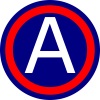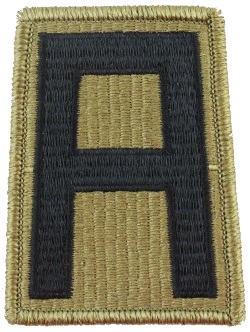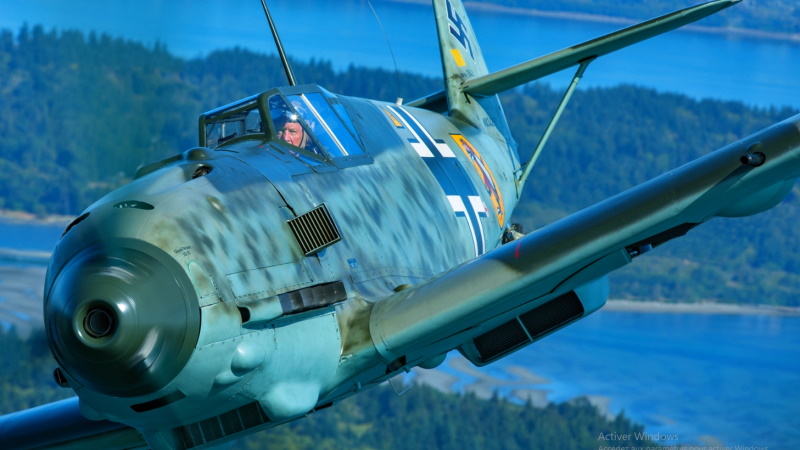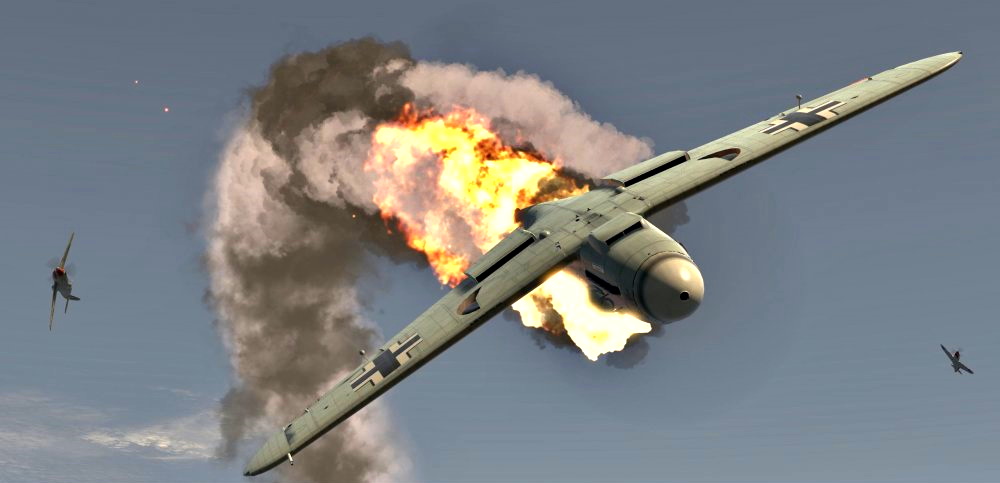 All combat aircraft of this command were grounded throughout the day on Aug 21 by the worst weather of the month. A warm wave occurring in connection with a cold front gave rise to low ceilings and ran over the entire north portion of France, restricting air operations to a single uneventful recon sortie, flown along the Loire in the Angers area. Armored advance elements of 3-A meanwhile were reported in Sens, 65 miles southeast of Paris; east of Pithiviers, 50 miles south of the capital; and moving eastward from Orléans along the Loire.
All combat aircraft of this command were grounded throughout the day on Aug 21 by the worst weather of the month. A warm wave occurring in connection with a cold front gave rise to low ceilings and ran over the entire north portion of France, restricting air operations to a single uneventful recon sortie, flown along the Loire in the Angers area. Armored advance elements of 3-A meanwhile were reported in Sens, 65 miles southeast of Paris; east of Pithiviers, 50 miles south of the capital; and moving eastward from Orléans along the Loire.
AUGUST 22-1944
 Increasing vulnerability of the German Luftwaffe, driven from some of its best fields to landing grounds north and northeast of Paris, was demonstrated during Aug 22 when fighters of XIX Tactical Air Command destroyed 20 enemy fighters for loss of one. Complete claims were 16-3-1 in the air and 4-0-4 on the ground. Fifteen P-51s of the 354th Group, on a fighter
Increasing vulnerability of the German Luftwaffe, driven from some of its best fields to landing grounds north and northeast of Paris, was demonstrated during Aug 22 when fighters of XIX Tactical Air Command destroyed 20 enemy fighters for loss of one. Complete claims were 16-3-1 in the air and 4-0-4 on the ground. Fifteen P-51s of the 354th Group, on a fighter  sweep in the Compiègne, Epernay, Sens area, hit the jackpot, destroying 12 Me-109s without loss. Eight were destroyed in the air as they were taking off from a new grass field five miles east of Epernay. At Beauvais and Nivilliers, 4 Me-109s on the ground were destroyed by strafing. Two more victims were added by the 362nd Group when one of its squadrons supporting the 7-AD and 5-ID was bounced by 15 to 20 Me-109s at Mantes–Gassicourt.
sweep in the Compiègne, Epernay, Sens area, hit the jackpot, destroying 12 Me-109s without loss. Eight were destroyed in the air as they were taking off from a new grass field five miles east of Epernay. At Beauvais and Nivilliers, 4 Me-109s on the ground were destroyed by strafing. Two more victims were added by the 362nd Group when one of its squadrons supporting the 7-AD and 5-ID was bounced by 15 to 20 Me-109s at Mantes–Gassicourt.
On armed recon in the Maux, Chalons, Troyes, and Melun area, the 358th Group P-47s ran into 25 or more Me-109s just west of Chalons and claimed 4-2-1 for loss of one. Later, on a special mission to strafe Creil airdrome, the Group destroyed 2 Me-110 in the air and damaged three more of these twin-engined fighters and one He-111 on the ground. The increasing vulnerability of the German Luftwaffe, driven from some of its best fields to landing grounds north and northeast of Paris, was demonstrated on Aug 22, when fighters of XIX Tactical Air Command destroyed 20 enemy fighters for the loss of one. Complete claims were 16-3-1 in the air and 4-0-4 on the ground.
Flying 333 combat sorties, our aircraft dropped 16.8 tons of GP bombs and 26 frag clusters, plus 18 leaflet bombs. Teen gun positions, an ammunition dump and a marshaling yard were attacked, and 120 railroad cars, 2 locomotives, 53 motor vehicles, and 5 tanks were destroyed or damaged. Recon sorties totaled 60.

 One of the AAA batteries of 3-A reported that the Germans were using the ancient fake dogfight trick. 2 Fw-190s with no markings and 3 Me-109s with US markings simulated, aerial combat, then all suddenly dived and strafed a US column. Patton’s 3-A was continuing its swift push to the east, with elements of the 4-AD reported 15 miles beyond the crossing of the Yonne River at Sens.
One of the AAA batteries of 3-A reported that the Germans were using the ancient fake dogfight trick. 2 Fw-190s with no markings and 3 Me-109s with US markings simulated, aerial combat, then all suddenly dived and strafed a US column. Patton’s 3-A was continuing its swift push to the east, with elements of the 4-AD reported 15 miles beyond the crossing of the Yonne River at Sens.
XV Corps units, patrolling  along the Eure River and advancing northwest along the Seine toward Louviers, were encountering stiff resistance. In Paris, French patriots were reported using light artillery against the Germans.
along the Eure River and advancing northwest along the Seine toward Louviers, were encountering stiff resistance. In Paris, French patriots were reported using light artillery against the Germans.
AUGUST 23-1944

 With the enemy endeavoring to give increased air support to his hard-pressed ground forces, especially along the Seine west of Paris, the 3-A reported on Aug 23, that the 79-ID bridgehead in the Mantes–Gassicourt area was attacked by rocket planes intermittently during the day. Flying armed recon ahead of our columns thrusting east past Sens and Troyes, P-47s of the 362nd Group had just dropped 8 500-GP bombs on a gun position east of Joigny when CCA-4-AD reported it was being strafed 12 miles northeast of Sens. The remaining bombs were jettisoned, and the Thunderbolts, from 9000 feet, bounced five Me-109s at 6500 feet, shooting down 2 and probably another for no loss. In all, this Command flew 463 combat sorties and 70 recon sorties on Aug 23, despite poor visibility, cloud and showers over bases and targets during part of the day. Claims against enemy aircraft totaled 5-4-7 for a loss of two (one of which was to flak).
With the enemy endeavoring to give increased air support to his hard-pressed ground forces, especially along the Seine west of Paris, the 3-A reported on Aug 23, that the 79-ID bridgehead in the Mantes–Gassicourt area was attacked by rocket planes intermittently during the day. Flying armed recon ahead of our columns thrusting east past Sens and Troyes, P-47s of the 362nd Group had just dropped 8 500-GP bombs on a gun position east of Joigny when CCA-4-AD reported it was being strafed 12 miles northeast of Sens. The remaining bombs were jettisoned, and the Thunderbolts, from 9000 feet, bounced five Me-109s at 6500 feet, shooting down 2 and probably another for no loss. In all, this Command flew 463 combat sorties and 70 recon sorties on Aug 23, despite poor visibility, cloud and showers over bases and targets during part of the day. Claims against enemy aircraft totaled 5-4-7 for a loss of two (one of which was to flak).

 The day’s bag of ground targets included 114 motor vehicles destroyed, 38 others damaged, 63 horse-drawn vehicles destroyed or damaged, and 4 tanks stopped or set afire, 4 gun positions, two ammunition dumps and a marshalling yard were successfully attacked, and our aircraft accounted for 11 locomotives and 64 cars destroyed or damaged.
The day’s bag of ground targets included 114 motor vehicles destroyed, 38 others damaged, 63 horse-drawn vehicles destroyed or damaged, and 4 tanks stopped or set afire, 4 gun positions, two ammunition dumps and a marshalling yard were successfully attacked, and our aircraft accounted for 11 locomotives and 64 cars destroyed or damaged.
A roundhouse and four lines were cut. As Gen Patton’s forces meanwhile continued to meanwhile continued to advance, having crossed the Seine both 

 above and below Paris, word was received that the French capital was now in Allied hands, having fallen to French Forces of the Interior. The 3-A’s 2nd French AD (now placed under 1-A control) subsequently entered the capital, together with 1-A’s 4-ID.
above and below Paris, word was received that the French capital was now in Allied hands, having fallen to French Forces of the Interior. The 3-A’s 2nd French AD (now placed under 1-A control) subsequently entered the capital, together with 1-A’s 4-ID.
The great encircling thrust by Gen Patton’s Army had caused the capital to fall like the proverbial ripe plum. Another phase was now at an end.
AUGUST 24-1944
Low ceilings and poor visibility over the target areas in the vicinity of Paris restricted our combat activity on Aug 24 to 12 missions totaling 164 sorties. The weather also handicapped the enemy and probably accounted for the fact that no German planes were seen. The rocket-firing 513th Squadron of the 406th Group launched 12 of its projectiles at 105-MM guns near Nantes and claimed 4 destroyed and 2 damaged. Five 88-MM guns also were attacked.

 Other aircraft of the 406th, on armed recon southeast of Paris, destroyed 40 carts of an ammunition convoy and disrupted railroad traffic. Along the Loire between Orléans and Tours, the 371st Group likewise did a little working on the railroad. The only other group able to operate to any extent was the 362nd, which flew cover to the 7-AD and the 5-ID in the Melun area, destroying tanks and motor vehicles that incidentally dropped leaflet bombs.
Other aircraft of the 406th, on armed recon southeast of Paris, destroyed 40 carts of an ammunition convoy and disrupted railroad traffic. Along the Loire between Orléans and Tours, the 371st Group likewise did a little working on the railroad. The only other group able to operate to any extent was the 362nd, which flew cover to the 7-AD and the 5-ID in the Melun area, destroying tanks and motor vehicles that incidentally dropped leaflet bombs.
No high-explosive bombs were carried out, rockets and strafing destroyed or damaged a total of 55 railroad cars, 2 locomotives, 68 motor vehicles, 3 tanks and armored vehicles, and 40 ammunition cars; 12 field gun positions were attacked and 2 headquarters were left burning. Twentynine recon sorties were flown.

 On the ground, the 3-A’s XII and XV Corps, southeast of Allied-occupied Paris, continued their swift thrust to the east, while XV Corps, now operating under the 1-A, moved eastward to aid in entrapping all the German forces remaining south of the lower Seine River.
On the ground, the 3-A’s XII and XV Corps, southeast of Allied-occupied Paris, continued their swift thrust to the east, while XV Corps, now operating under the 1-A, moved eastward to aid in entrapping all the German forces remaining south of the lower Seine River.
Something to be also added to the credit of the happy triggers of the Army Air Forces, is the killing by friendly fire of the first American Top Officers. In July 1944, Lt Gen Lesley J. McNair, Commander of the Army Ground Forces, was in France to observe troops in action during Operation Cobra, and add to the Fist United States Army Group (FUSAG) deception by making the Germans believe he was in France to exercise command of this ghost Army  Group. McNair was killed near St Lô, on July 25, when errant bombs of the Eighth Air Force fell on the positions of 2/120-IR (30-ID), where he was observing the fighting. In one of the first Allied efforts to use heavy bombers in support of ground combat troops, several planes dropped their bombs short of their targets, resulting of the killing of over 100 US soldiers and a lieutenant General while nearly 500 other men were wounded.
Group. McNair was killed near St Lô, on July 25, when errant bombs of the Eighth Air Force fell on the positions of 2/120-IR (30-ID), where he was observing the fighting. In one of the first Allied efforts to use heavy bombers in support of ground combat troops, several planes dropped their bombs short of their targets, resulting of the killing of over 100 US soldiers and a lieutenant General while nearly 500 other men were wounded.
This was the day that broke the back of the German fighter force in France. In aerial combat and in strafing attacks on enemy airfields, P-51s and P-47s of the IX and XIX Tactical Air Commands destroyed a total of 127 planes (77 in the air and 50 on the ground). Eleven others were probably destroyed and 53 damaged, making a total of 171 German planes whose destruction, probable destruction, or damage was claimed. Losses of the two Commands totaled 27 aircraft.

 In Germany too, the Luftwaffe suffered serious losses. The 8-AAF, escorting heavy bombers, claimed 11 destroyed in the air and 40 on the ground. Total claims for the 9 and 8-AAF during the day (both air and ground) thus came to 178 destroyed, 13 probably destroyed and 63 damaged – a grand total of 254 planes. XIX TAC’s share of the bag totaled 36-1-8 in the air and 18-4-0 on the ground, or 54-5-8, all told, against the loss of 8 planes and 7 pilots.
In Germany too, the Luftwaffe suffered serious losses. The 8-AAF, escorting heavy bombers, claimed 11 destroyed in the air and 40 on the ground. Total claims for the 9 and 8-AAF during the day (both air and ground) thus came to 178 destroyed, 13 probably destroyed and 63 damaged – a grand total of 254 planes. XIX TAC’s share of the bag totaled 36-1-8 in the air and 18-4-0 on the ground, or 54-5-8, all told, against the loss of 8 planes and 7 pilots.
 P-51 pilots of the 354th Group, flying fighter sweeps north and northeast of Paris with special attention to enemy airfields, had one of the biggest days in the history of this crack unit. All of the claims in aerial combat were theirs (36-1-8) and in addition they destroyed 13 single-engine fighters on the ground at fields near Beauvais and Reims. Operating by squadrons, they were always outnumbered; late in the day, for example, 12 P-51s fought 45 or more Fw-190s and Me-109s north of Beauvais, claiming 15-0-5 and losing four. There were renewed evidence that the Luftwaffe was finding its bases in the Paris area too hot to hold. Our pilots reported that some of the enemy fighters sighted were carrying belly tanks and were headed east.
P-51 pilots of the 354th Group, flying fighter sweeps north and northeast of Paris with special attention to enemy airfields, had one of the biggest days in the history of this crack unit. All of the claims in aerial combat were theirs (36-1-8) and in addition they destroyed 13 single-engine fighters on the ground at fields near Beauvais and Reims. Operating by squadrons, they were always outnumbered; late in the day, for example, 12 P-51s fought 45 or more Fw-190s and Me-109s north of Beauvais, claiming 15-0-5 and losing four. There were renewed evidence that the Luftwaffe was finding its bases in the Paris area too hot to hold. Our pilots reported that some of the enemy fighters sighted were carrying belly tanks and were headed east.
Facilities at Romilly sur Seine, Melun, Villaroche, and Troyes were being destroyed as 3-A’s columns approached. Foremost mechanized cavalry elements were now about 15 miles east of Troyes, which meant they were approximately 100 miles southeast of Paris and 120 miles from the German border. Meanwhile, far to the west, the VIII Corps began a determined attack upon beleaguered Brest, which was being heavily bombarded by sea and air.
Flying 632 combat sorties, the Command claimed the following results against ground targets in addition to the harvest reaped in the air, 266 motor vehicles, 4 tanks, 44 locomotives, and 164 cars destroyed or damaged; 5 marshaling yards attacked and 5 lines cut; 3 field gun positions, 4 troop concentrations, an ammunition dump and 8 military buildings destroyed; 5 airfields attacked and 2 hangars destroyed. In anti-shipping operations off Brest, two naval vessels are claimed as destroyed and three naval and nine merchant vessels were damaged. Four P-51s of the 10th Recon Group flew artillery adjustment sorties for corps artillery at Brest, noting many hits on enemy gun positions and shipping. Recon sorties totaled 64.
After his heavy air losses of the previous day, the enemy avoided combat with our fighters on Aug 26 and the day’s bag totaled only 2 enemy aircraft destroyed and one damaged, all three on the ground. Our groups on armed recces, patrols, and armored column cover flew 528 sorties. Four planes were lost. Targets were successfully attacked both in the Brest area and in advance of our forces pushing on from southeast of Paris toward Germany. Results included 315 motor vehicles, 22 armored vehicles, 75 horse-drawn vehicles, 3 motorcycles, 8 locomotives, and 106 railroad cars destroyed or damaged; 16 rail lines cut, a bridge, and 9 merchant vessels damaged and 10 barges destroyed or damaged.
Attacks also were made on 30 enemy buildings, a radar station, five strong points, 1 oil tank, a factory, and 3 airfields. Indications were seen that the enemy might bring jet-propelled fighters into action against our aircraft soon if he could muster sufficient numbers. A probable Me-262 twin-jet-propelled fighter was sighted by pilots of the 405th Group on Aug 25, and on the 26, the same group reported contrails at 20000 feet in the vicinity of Caen, traveling at an estimated speed of 500 miles per hour.





















